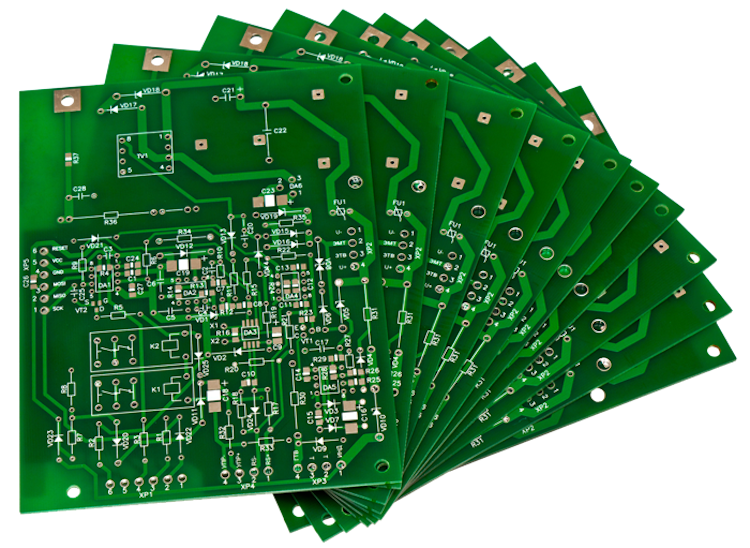
Understanding PCB Materials: A Comparison of FR4 and High-Frequency Materials
When you first start learning about PCBs and their manufacturing, things seem to be extremely complicated. At some point, you might think, “It’s not for me.”
But as soon as you keep learning, complexities start getting untangled quite easily. And today, we’ll untangle one of the biggest debates about PCB.
Which PCB material should we use? FR4 or High-Frequency?
Let’s find out.
Definitions of FR4 and High-Frequency PCB Materials
FR4 PCB Material
FR literally means flame retardant and the name was given by NEMA (National Electrical Manufacturers Association). FR-4 is an easy name for glass-reinforced epoxy resin laminate.
In easier words, glass-oriented material used to build printed circuit boards is called FR4. It is more commonly used because it fulfills all requirements for building a standard PCB.
Its brilliant resistance-weight ratio makes it special and the use of bromine and halogen (chemical) makes it fire resistant.
High-Frequency PCB Material
The main thing that makes high-frequency material different from traditional FR4 material is ‘high frequency.’ But there are many different types of high-frequency PCB materials that are used for different purposes.
High-frequency PCB material is more commonly used as Roger’s material and it is used by only a few PCB manufacturers. The name Roger came from a company because that company’s high-frequency PCB materials are more famous than anyone else. It’s like using the word ‘Vaseline’ for petroleum jelly.
It is generally known that PCB manufacturers never use Roger’s material until a client specially asks and pays for it.
What’s the Difference between FR4 and High-Frequency PCB Materials?
To understand which PCB material will be right for you to work on, it’s extremely important to first know why they are distinctive:
1. Frequency Difference
The main difference between these two materials is obviously frequency. FR4 can only perform in certain frequencies while the second one is pretty flexible and works amazingly within large ranges of frequency.
2. Humidity Control
Moisture is one of the biggest challenges while working with PCBs. Hence, you have to use as moist-resistant material as possible (depending on the region where you live). Not significantly more, but high-frequency material tends to absorb more moisture than the other one.
3. Electrical Resistivity
In PCBs, it’s not always about the levels of resistivity, but the thing that matters is stability in it. And higher frequency materials are more stable with resistance.
4. Thermal Management
No matter which material you use, it has to be the first good conductor of heat energy. In this case, high-frequency material is three times better thermal conductor which means that thermal management is easier in this type of material.
Why FR4 PCB Materials are Used More than High-Frequency Materials?
Still unable to process why FR4 material is more commonly used? Keep reading!
1. Cost
The biggest reason why FR4 material is more commonly used is the difference in price. FR4 is way less expensive than high-frequency material due to many reasons and one of them is because not every PCB material manufacturing company creates high-frequency material.
Every manufacturer of PCBs is a business person. Right? So, everyone wants to make circuit boards for as less amount as possible while keeping it on that specific line of quality.
2. Signal Loss
If your PCB is losing signal during the flow, it means you failed to manufacture the best piece of circuit board. In FR4, low df helps signal to transmit seamlessly.
3. All Standard Necessities
Beginners think using FR4 is almost a crime only because of the huge price difference. But in reality, using FR4 material isn’t bad as it doesn’t really compromise on quality.
Reasons Why Engineers Still Prefer High Frequency Materials
We understand that the factors given above have created more complexities. That’s why we are here with specialties of high-frequency materials to untie the knots:
1. Miniaturization
Complex circuits are always better to draw and design with high-frequency material because of consistency in the substance.
2. Flexibility in Design
It is way easier to design high-frequency material so if you want to put less effort, you might need to change your mind.
3. No Material Loss
The reliability factor jumps in the discussion because when you want to use the same PCB for a long time. It’s always better to go with high-frequency material because FR4 loses a huge amount of material on it when used for a long period.
Final Words
Now, you know what the difference is between high-frequency and FR4. Not just this, but (more importantly), you know when to use which material. Hence, it’s up to you to decide which one to go with depending on your clients’ and your requirements.
- Tip: There’s no shame in using FR4 because there’s no compromise in quality while using it. But if your client wants high-frequency, go for it.
If you think knowing all about FR4 and high-frequency material is enough for you, you are wrong. It’s because PCB manufacturing is way more than this. So, click here for more information!

